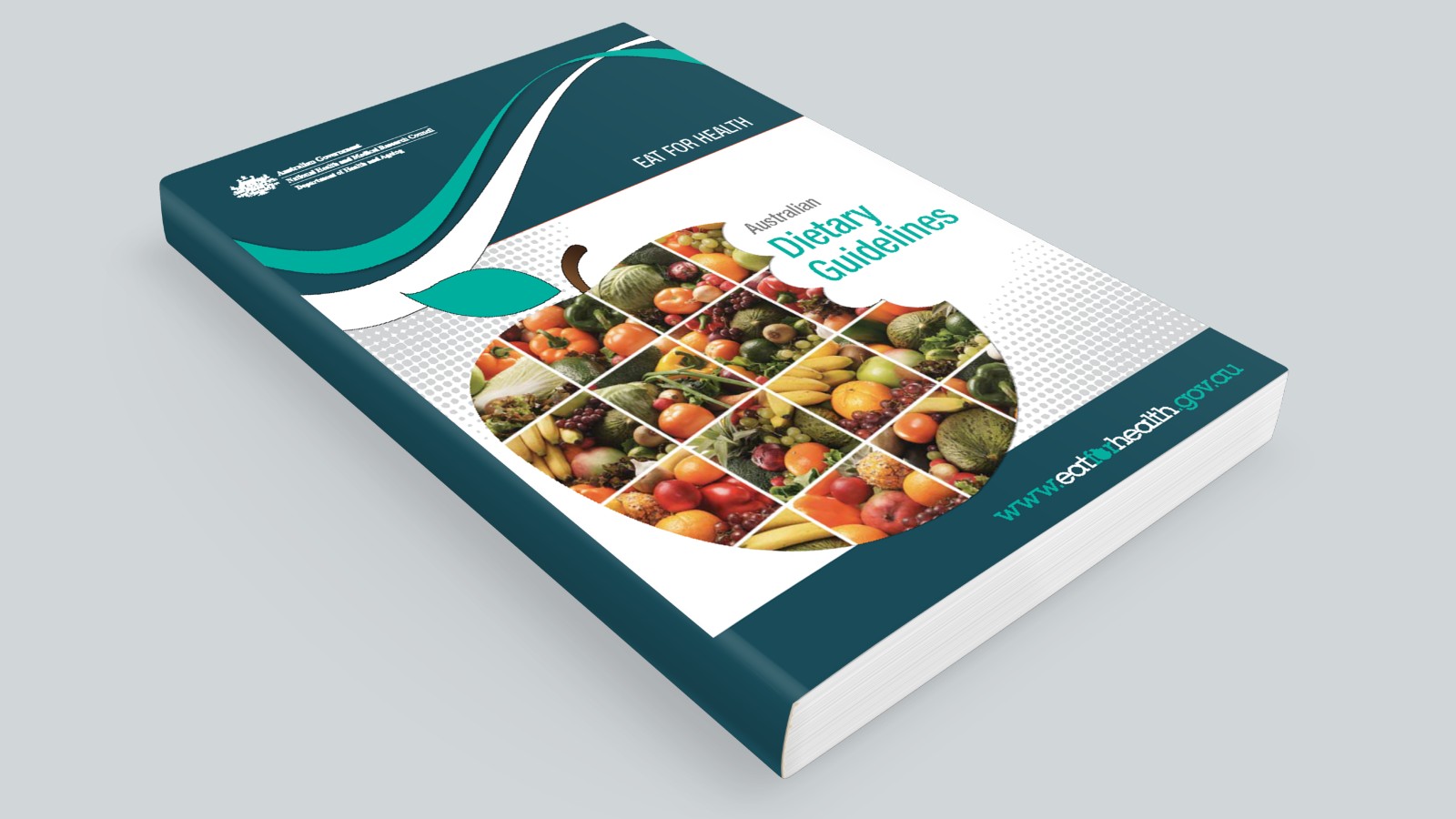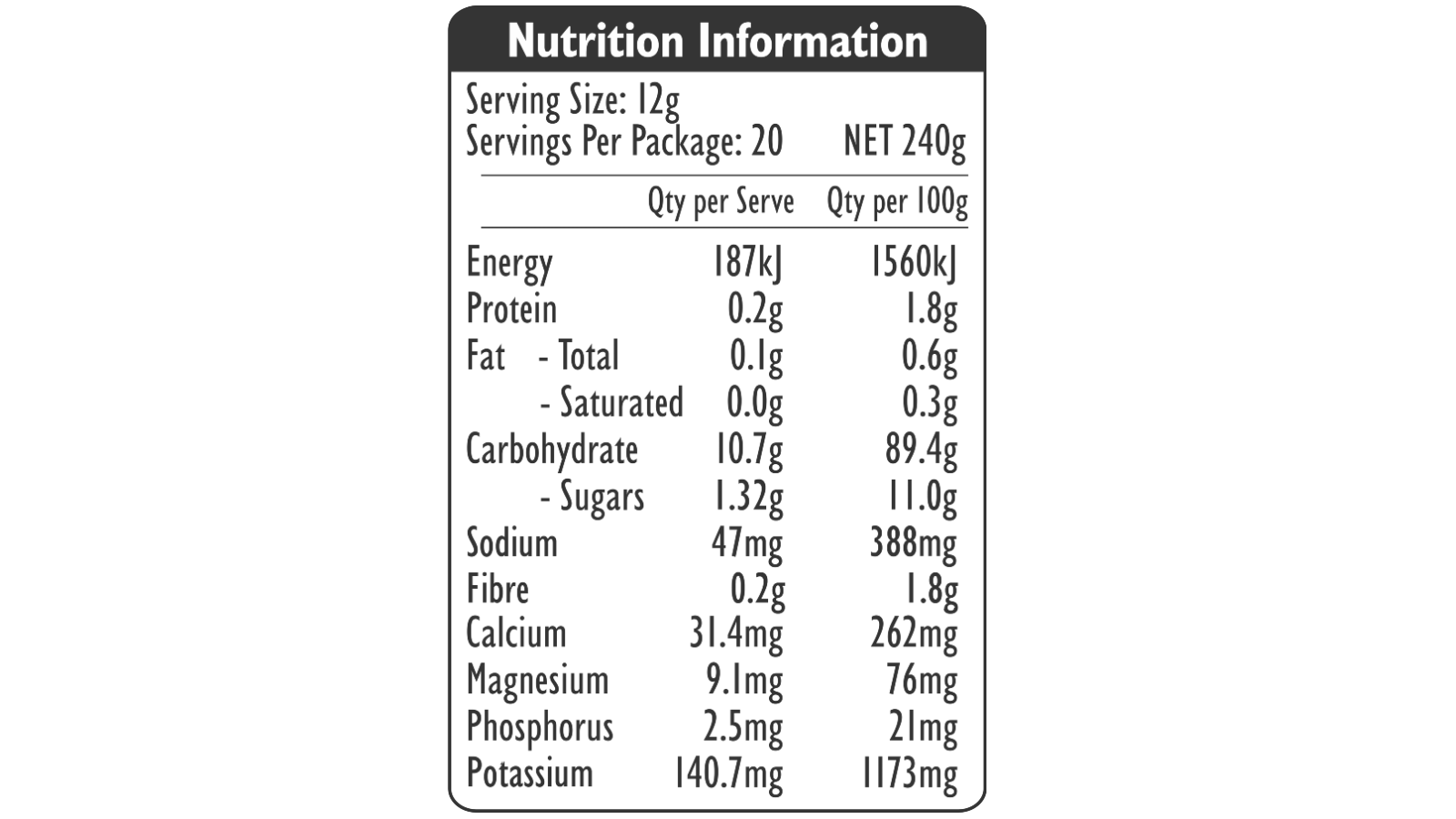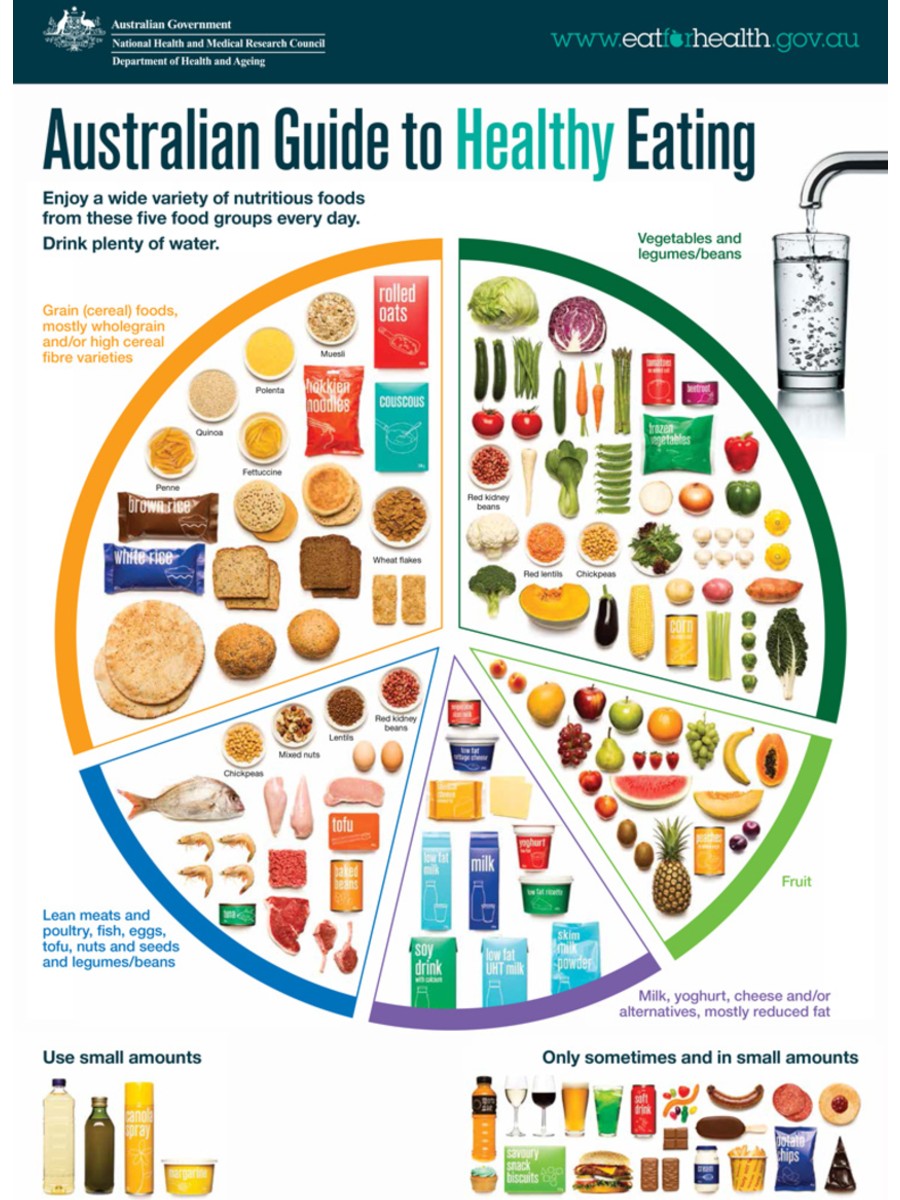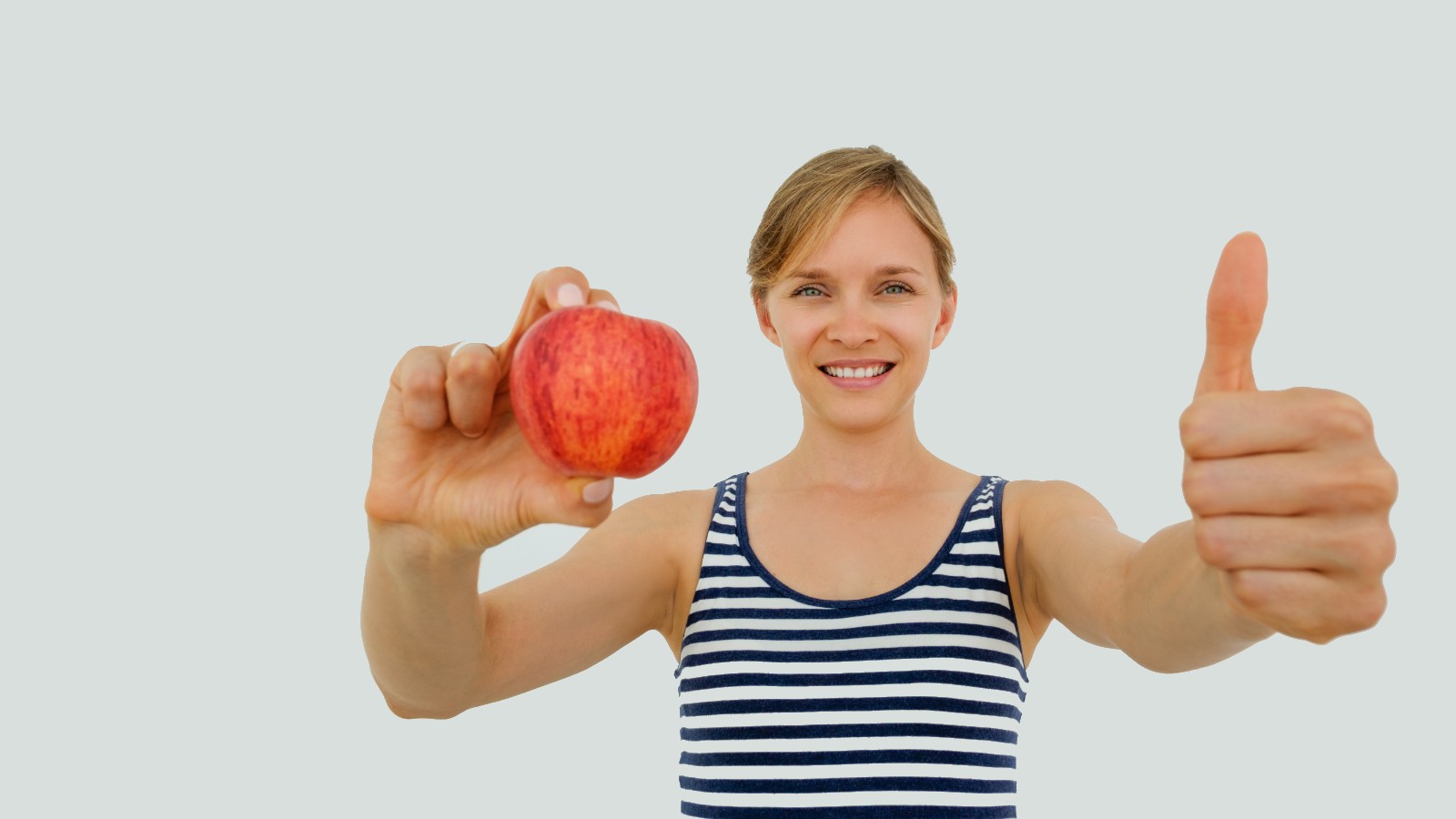When providing information related to healthy eating/nutrition it is essential that you are fully aware of the limitations you have within your role as a fitness professional. Any information you provide must be from accredited sources and be general in nature.
Under no circumstances should you:
-
Provide individualised dietary analysis, advice or recommend specific diets.
-
Provide dietary advice regarding infants, toddlers, the elderly or people with medical conditions. Always refer these clients to a qualified dietician or general practitioner.
A personal trainer CAN provide nutritional advice to healthy individuals that is consistent with the Australian Dietary Guidelines and publicly available recommendations outlined in the Eat for Health Program guidelines.
Information in this topic is based on the Australian Dietary Guidelines which are developed by the Australian Government through the National Health and Research Council. This resource promotes five guidelines:
-
Achieve and maintain healthy weight, by being physically active and choosing nutritious food and drinks to meet energy needs.
-
Eating a wide variety of nutritious foods from the five food groups.
-
Limiting saturated fat, added salt, added sugars and alcohol.
-
Encouraging, supporting and promoting breastfeeding.
-
Maintain food safety.

The average adult requires approximately 8700 kilojoules (or 2080 calories) per day to maintain a healthy weight. This will vary depending on daily activity levels, age, height and current weight. There are various online tools and apps that can be utilised to keep track of daily kilojoule intake. Examples include MyFitnessPal and Foodswitch by Bupa.
By law, food labels in Australia must display the number of kilojoules (and the breakdown that contributes to these kilojoules) the food items contains per 100g (or 100ml) . It is also common to see the amount of kilojoules 'per serving' with an estimated number of servings per packet size.

As can be seen with this label, the manufacturer is claiming that there are 20 (12g) servings in the total packet. Each serving size is worth 187kj, if an individual consumes more than one of these servings they must multiply the number of kilojoules per serving by the number of servings they consume. In some products it can be difficult to determine how many servings have been consumed without the use of scales.
In addition to product labels, the Australian and New Zealand Food Standards website provides a searchable database of a wide range of food and beverages (including fresh foods) and provides nutritional information about them.
If an individual is looking to lose weight they must consume less kilojoules than they use via physical activity, this can be achieved by either restricting intake of food (dieting) or increasing physical activity (exercising) or a combination of both.
It is important to note that physical activity has a favourable effect on body composition and overall health and therefore should be incorporated into any weight loss goal and suitable energy is required to fuel the body during physical activity.
As long as balanced nutritious food choices are made, suitable portion sizes consumed, and energy-dense, nutrient-poor foods with added sugar and salt are avoided there shouldn't much need to restrict kilojoule intake in a healthy adult who is also exercising.
It is recommended in the Australian Dietary Guidelines that daily kilojoules are obtained through a balanced diet consisting of foods from all five of the following food groups.
Often grouped together with fruit, this group also includes legumes/beans. Vegetables are categorised as follows:
-
Green Leafy Varieties - Lettuce, Spinach, Silverbeet. These foods are high in folate.
-
Cruciferous - Cabbage, Cauliflower, Brussel Sprouts.
-
Marrow - Pumpkin, Cucumber, Zucchini. These foods are a good source of complex carbohydrates.
-
Root - Potato, Sweet Potato, Yam. These foods are a good source of complex carbohydrates.
-
Edible Plant Stem - Celery, Asparagus, Leek.
-
Allium - Onion, Garlic, Shallots.
-
Legumes - Peas, Lentils, Beans, Peanuts. These foods provide protein, iron, some essential fatty acids as well as soluable and insoluable fibre and mirconutrients. They are a good meat alternative for vegans or vegetarians.
Often grouped together with vegetables, this group can include fresh fruit and also cooked, canned or dried varieties although the latter option has a higher sugar content and therefore should only be consumed occasionally. Fruits are categorised as follows:
-
Pome Fruit - Apples, Pears.
-
Citrus - Oranges, Grapefruits, Mandarins.
-
Tropical - Bananas, Mangoes.
-
Berries - Strawberries, Raspberries, Kiwifruit, Passionfruit, Tomato, Avocado.
-
Melons - Watermelon, Rockmelon, Honeydew.
It is recommended that adults consume two serves of fruit per day. Fruit is high in dietary fibre and vitamins, especially Vitamin C.
These should be mostly wholegrain and/or have a high fibre content. Including, but not limited to:
-
Wheat.
-
Oats.
-
Rice.
-
Barley.
-
Millet.
-
Corn.
This food group can provide: Complex Carbohydrates, Protein, Dietary fibre, B Group vitamins, Vitamin E, Iron, Zinc, Magnesium and Phosphorus.
In Australia it is mandatory for wheat flour used in bread making to be fortified with folic acid and thiamin, and for the salt used to be iodised.Australian Dietary Guidelines, 2013
This group is protein-rich and provides important nutrients such as: Iodine, Iron, Zinc and other minerals, Vitamins (especially B12) and Essential Fatty Acids including Omega-3. Examples of lean meats and alternatives are:
-
Grass-fed meats.
-
Poultry.
-
Eggs.
-
Fish.
-
Tofu.
-
Nuts and seeds.
-
Legumes/beans.
Limitations within this food group include the consumption of processed or cured meats which are usually high in added salt and saturated fat. The nuts and seeds and legumes/beans category of this food group is especially beneficial as a protein source for vegans and vegetarians.
Vitamin B12 is only available from animal food sources and supplementation may be needed by people with vegetarian or vegan dietary patterns.Australian Dietary Guidelines, 2013
Previously referred to as 'dairy products' this has been amended because certain dairy products are not recommended such as butter, cream and ice-cream. Another reason for the amendment of this group is that whilst milk, yoghurt and cheese is most commonly derived from cows or other animal milk it can also be produced using soy, almonds and various cereals such as oats and rice (as long as these alternatives are calcium-enriched).
This food group is a good source of calcium, protein, iodine, Vitamins A, D, B12, Riboflavin and Zinc. It is recommended that reduced-fat varieties of these products be consumed for people aged between 2-70.
The five food groups are not evenly distributed. You may have previously seen them illustrated in a pyramid shape or as per the image below in a pie chart or plate shape.
To achieve a balanced diet, the biggest portion in any given meal or daily food intake should be allocated to the combined Vegetables and Fruit groups, followed by the Grains group, then Lean Meats and finally Milk, Yoghurt and Cheese.
The Australian Guide to Healthy Eating also identifies certain food and beverage items which should only be consumed in limited quantities. Including, Fats and Oils, Soft Drinks, Alcohol, Cake, Confectionary and Take-away burgers/chips.
Water is a very important aspect of a healthy eating plan and it is recommended that adults drink between 2.1 - 2.6 litres per day (or 8-10 cups).

A blank template version of the Australian Guide to Healthy Eating can be accessed here. It can be printed or opened as an editable PDF inwhich information can be typed into the different food group sections. This is particular helpful when assisting a client to develop a healthy eating plan.
Portion size is a commonly misunderstood concept and it is easy to consume too much food, even healthy food. Ideal portion sizes will vary depending on whether a person is male, female, young, old, highly active or mostly sedentary. However, some guides to assist with determine appropriate quantities are:
| Food Group | Food Item | Serving Size |
|---|---|---|
| Vegetables | Cruciferous Vegetables (cooked) | 75g (½ cup) |
| Cooked orange vegetables (sweet potato, pumpkin etc...) | 75g (½ cup) | |
| Raw leafy green vegetables | 75g (1 cup) | |
| Potato and other starchy vegetables | ½ medium potato | |
| Fruit | Apple, Banana, Orange, Pear | 1 piece (150g) |
| Apricots, Kiwi Fruit, Plums | 2 pieces (150g) | |
| Diced, Cooked or Canned Fruit (preferably with no added sugar) | 150g (1 cup) | |
| Fruit Juice (100% no added sugar) | 125ml (½ cup) | |
| Grains | Wholegrain bread or bread roll | 1 slice or ½ a medium roll |
| Cooked rice, pasta, noodles etc... | 75-120g (½ cup) | |
| Crumpet or English Muffin | 1 | |
| Lean Meat | Beef, Lamb, Pork, Venison or Kangaroo | 65g or ½ cup mince or 2 small chops or 2 slices of roast meat. |
| Chicken or Turkey | 80g | |
| Fish | 100g fish fillet or 1 small can | |
| Dried beans, lentils, chickpeas etc... | 150g (1 cup) | |
| Tofu | 170g | |
| Milk, Yoghurt, Cheese | Fresh, UHT, or powdered milk | 250ml (1 cup) |
| Evaporated unsweetened milk | 120ml (½ cup) | |
| Yoghurt | 200g (¾ cup) | |
| Hard Cheese (ie. Cheddar) | 40g (2 slices or 4x3x2cm piece) | |
| Ricotta Cheese | 120g (½ cup) | |
| Soy, Rice, or other cereal milk with at least 100mg added calcium per 100ml | 250ml (1 cup) |
The human body is like a machine, except rather than metal and batteries it is comprised of cells, tissue, blood and other matter. The fuel that keeps our 'machine' going is energy, measured in the form of kilojoules and our bodies convert the food we consume and the beverages we drink into energy through a process known as metobolism.
This process consists of two types of chemical reactions:
-
Catabolism - The breaking down of substances into smaller molecules, releasing of essential nutrients and creating energy.
-
Anabolism - The process by which the body utilises the energy released as part of catabolism for the growth and repair of cells.
Metabolism is occurring constantly, however the rate or speed of the process does vary. Resting metabolic rate refers to the amount of energy your body requires to function whilst at rest. This base rate is then increased depending on activity levels.
Metabolism can be affected by the following factors:
-
Nutrition - Eating too few kilojoules can slow the metabolism as the body attempts to conserve energy. Alternatively eating a diet that is high in processed foods, sugar, fat, and/or salt can affect metabolism as there may be limited essential nutrients and also certain types of foods are processed faster by the body (high glycaemic index foods) resulting in more food being consumed.
-
Muscle Mass - The greater the mass of your muscles the heavier demand on the body to produce energy.
-
Genetics - Certain people are predisposed to genetic conditions, such as hyperthyroidism, which cause hormone imbalances that affect metabolism.
-
Physical Activity - Increased physical activity forces the body to burn energy faster.
-
Body Composition and Demographic - Body size, gender, and environment can all influence metabolism.
-
Age - As we get older our metabolism naturally slows and muscle mass decreases.
-
Drugs - Certain medications and drugs such as anti depressants and steroids can influence metabolism.
As a fitness professional you will be required to interact with people from various backgrounds, religions, and ethnicities. You may also have clients with a wide range of age, gender and personality differences. When providing information and advice regarding nutrition and healthy eating it is important that you consider cultural and social influences as part of the conversation.
Some cultural considerations:
-
East Asian Decent - Approximately 70 - 100% are Lactose intolerant. Many dishes contain fish and rice or noodles.
-
Southern European - Cook with a Mediterranean influence including the use of olive oil, olives, tomatoes, pasta, and rice.
-
Hindu - Regard the cow as sacred and that eating beef is a sin. Devout Hindus observe a lacto-vegetarian diet, meaning no meat and no eggs.
-
Judaism - Food must be prepared to kosher guidelines. Orthodox Jews will only eat animals that satisfy two conditions: 1. They chew their own cud (reguritated food) and they have cloven feed (split hoof). For example, pigs have cloven feet but they do not chew their cud and therefore are forbidden. Jews also believe that meat and dairy products must not be prepared together.
-
Muslim - Meat must be slaughtered in the Halal (to the law) manner. The following Haram (not to the law) foods include pig meat, birds of prey, wild animals, crustaceans, molluscs, blood/blood products, aggressive fish, and fish without scales.
-
Buddhist - Are mostly vegetarian.
-
Christians -For the most part do not let their beliefs influence their eating habits however some do observe the period of Lent inwhich certain products and foods may be avoided as a means of sacrifice. Also, on Good Friday it is tradition (espcially for Roman Catholics) to consume fish rather than meat for the main meal.
Some social considerations:
-
Socio-Economic Status - Access to fresh and nutritious food can be expensive and out of reach for some people.
-
Family Influence - Foods eaten since childhood may be preferred.
-
Peer Presure - Social pressure to consume certain foods, particularly unhealthy junk food or alcohol can be quite strong.
-
Addiction - Some people crave certain foods and find them very difficult to give up.

